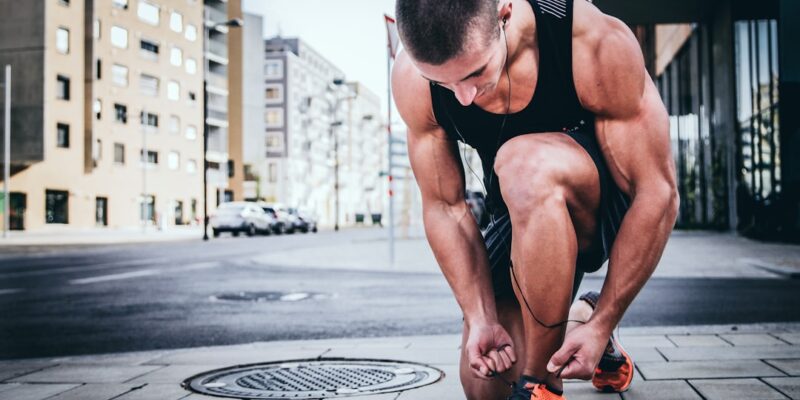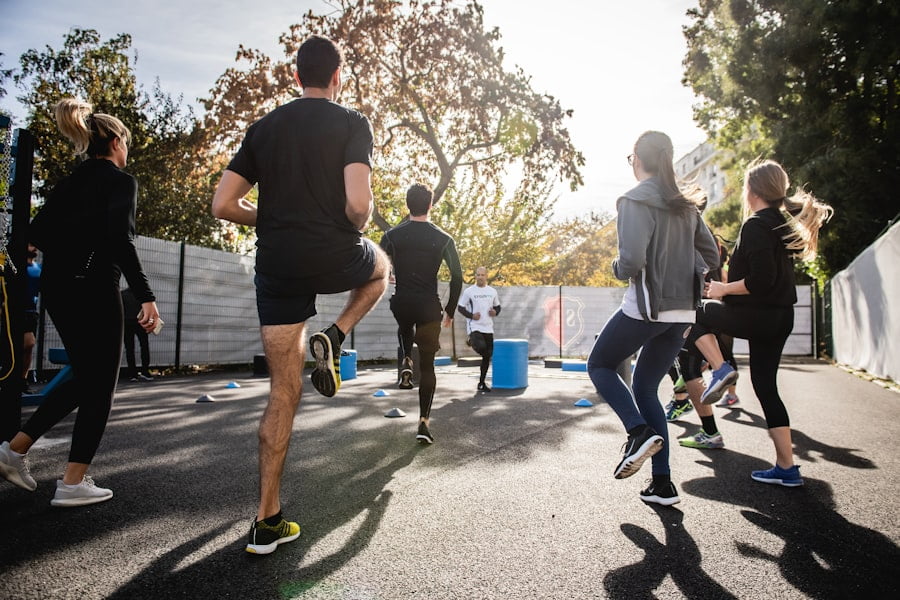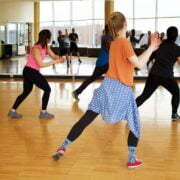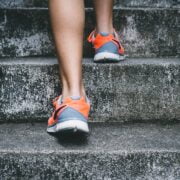
Maximize Your Strength and Prevent Injury: The Benefits and Proper Form for Incorporating Deadlifts into Your Workout
Deadlifts are a fundamental exercise in strength training that involve lifting a barbell or other weighted object from the ground to a standing position. This exercise primarily targets the muscles in the lower body, including the glutes, hamstrings, and quadriceps, but it also engages the core, back, and upper body muscles. Deadlifts are considered a compound exercise, meaning they work multiple muscle groups at once, making them an efficient and effective way to build strength.
Deadlifts are an essential part of any strength training program because they provide numerous benefits. Not only do they help increase muscle mass and strength, but they also improve posture and balance, reduce the risk of injury, and enhance overall athletic performance. Whether you’re a beginner or an experienced lifter, incorporating deadlifts into your fitness routine can have a significant impact on your overall strength and physical well-being.
Key Takeaways
- Deadlifts are a compound exercise that work multiple muscle groups and are important for building overall strength.
- Proper warm-up and form are crucial for preventing injury during deadlifts.
- There are different types of deadlifts, including conventional, sumo, and Romanian, each with their own benefits and variations in form.
- Deadlifts primarily work the posterior chain muscles, including the glutes, hamstrings, and lower back.
- Common mistakes to avoid during deadlifts include rounding the back, lifting with the arms, and not engaging the core.
The Benefits of Deadlifts: Building Strength and Preventing Injury
One of the primary benefits of deadlifts is their ability to build muscle mass and strength. Deadlifts target multiple muscle groups simultaneously, including the glutes, hamstrings, quadriceps, calves, core, back, and upper body muscles. By engaging these muscles in a compound movement, deadlifts allow for greater muscle activation and recruitment compared to isolation exercises. This increased muscle activation leads to greater gains in strength and muscle mass over time.
In addition to building strength, deadlifts also improve posture and balance. The muscles targeted during deadlifts are crucial for maintaining proper posture and stability throughout the body. By strengthening these muscles, deadlifts help correct imbalances and promote better alignment of the spine and joints. This improved posture not only enhances physical appearance but also reduces the risk of developing chronic pain or injuries related to poor posture.
Furthermore, deadlifts can help prevent injuries by strengthening the muscles and connective tissues that support the spine and joints. The lower back, in particular, is heavily involved in the deadlift movement and is strengthened as a result. A strong lower back is essential for maintaining proper spinal alignment and stability, which can help prevent injuries during everyday activities and other exercises. Additionally, deadlifts strengthen the muscles of the hips, which play a crucial role in stabilizing the pelvis and preventing injuries such as hip impingement or strains.
Preparing for Deadlifts: Warming Up and Proper Form
Before performing deadlifts, it is essential to warm up properly to prepare the body for the demands of the exercise. Warming up increases blood flow to the muscles, raises body temperature, and improves joint mobility, all of which can help prevent injuries during exercise. A proper warm-up for deadlifts should include dynamic stretches, such as leg swings and hip circles, as well as light cardio exercises like jogging or jumping jacks.
Proper form and technique are crucial when performing deadlifts to maximize effectiveness and minimize the risk of injury. To execute a deadlift correctly, start by standing with your feet shoulder-width apart and the barbell positioned in front of you on the ground. Bend at the hips and knees while keeping your back straight and chest lifted. Grip the barbell with an overhand grip slightly wider than shoulder-width apart. Engage your core and drive through your heels as you lift the barbell off the ground, extending your hips and knees until you are standing upright. Lower the barbell back down to the ground in a controlled manner.
There are several common mistakes to avoid when performing deadlifts. One of the most common mistakes is rounding the back during the lift. This can put excessive strain on the spine and increase the risk of injury. To prevent this, focus on keeping your back straight throughout the movement and engage your core to maintain stability. Another common mistake is using an improper grip. It is important to use a grip that feels comfortable and secure, such as an overhand grip or mixed grip. Finally, avoid overextending at the top of the lift by hyperextending the lower back. This can lead to unnecessary strain on the spine and should be avoided by maintaining a neutral spine position throughout the movement.
Different Types of Deadlifts: Conventional, Sumo, and Romanian
| Deadlift Type | Muscles Worked | Difficulty Level | Benefits |
|---|---|---|---|
| Conventional Deadlift | Glutes, Hamstrings, Lower Back, Quads | Intermediate | Increases overall strength and power, improves grip strength |
| Sumo Deadlift | Glutes, Hamstrings, Quads, Upper Back | Advanced | Reduces stress on lower back, targets inner thigh muscles |
| Romanian Deadlift | Glutes, Hamstrings, Lower Back | Intermediate | Improves hamstring flexibility, strengthens lower back muscles |
There are several variations of deadlifts that target different muscle groups and emphasize different aspects of the lift. The three most common types of deadlifts are conventional deadlifts, sumo deadlifts, and Romanian deadlifts.
Conventional deadlifts are the most common type of deadlift and involve a shoulder-width stance with the hands placed just outside the legs. This variation primarily targets the glutes, hamstrings, quadriceps, and lower back muscles. Conventional deadlifts require a greater range of motion compared to other variations, making them ideal for building overall strength and muscle mass.
Sumo deadlifts involve a wider stance with the hands placed inside the legs. This variation places more emphasis on the inner thigh muscles (adductors) and glutes while reducing stress on the lower back. Sumo deadlifts are often favored by individuals with longer limbs or limited hip mobility.
Romanian deadlifts (RDLs) differ from conventional and sumo deadlifts in that they focus more on the eccentric (lowering) phase of the lift rather than the concentric (lifting) phase. RDLs involve a slight bend in the knees and a hip hinge movement pattern, targeting the hamstrings, glutes, and lower back muscles. This variation is particularly effective for strengthening the posterior chain and improving hip mobility.
Each type of deadlift has its own benefits and drawbacks, and the choice of which variation to incorporate into your workout routine depends on your individual goals and preferences. It is important to note that regardless of the variation, proper form and technique should always be prioritized to ensure safety and effectiveness.
The Muscles Used in Deadlifts: Understanding the Anatomy
Deadlifts are a compound exercise that engages multiple muscle groups throughout the body. Understanding the anatomy of the muscles involved in deadlifts can help you better understand the benefits and importance of this exercise.
The major muscle groups involved in deadlifts include the glutes, hamstrings, quadriceps, calves, core, back, and upper body muscles. The glutes, which consist of the gluteus maximus, medius, and minimus, are responsible for hip extension and play a significant role in generating power during the deadlift movement. The hamstrings, located at the back of the thigh, work in conjunction with the glutes to extend the hips and stabilize the knees during the lift. The quadriceps, located at the front of the thigh, help extend the knees and provide stability throughout the movement.
The calves, located at the back of the lower leg, assist in maintaining balance and stability during the lift. The core muscles, including the rectus abdominis, obliques, and transverse abdominis, provide stability and support to the spine during the deadlift movement. The back muscles, including the erector spinae and latissimus dorsi, are heavily involved in maintaining proper posture and spinal alignment throughout the lift. Finally, the upper body muscles, including the trapezius, rhomboids, and biceps, assist in stabilizing the barbell during the lift.
Each muscle group plays a crucial role in executing a proper deadlift and contributes to overall strength and stability. By targeting these muscles through deadlifts, you can improve their strength and function, leading to enhanced athletic performance and reduced risk of injury.
Common Mistakes to Avoid: Tips for Proper Execution

While deadlifts are an effective exercise for building strength and muscle mass, there are several common mistakes that individuals often make when performing this movement. By avoiding these mistakes and focusing on proper execution, you can maximize the benefits of deadlifts and reduce the risk of injury.
One of the most common mistakes is rounding the back during the lift. This can put excessive strain on the spine and increase the risk of injury. To prevent this, it is important to focus on keeping your back straight throughout the movement. Engaging your core and maintaining a neutral spine position will help ensure proper alignment and reduce the risk of injury.
Another common mistake is using an improper grip. It is important to use a grip that feels comfortable and secure, such as an overhand grip or mixed grip. An overhand grip involves both palms facing towards you, while a mixed grip involves one palm facing towards you and the other palm facing away from you. Experiment with different grips to find what works best for you in terms of comfort and stability.
Overextending at the top of the lift is another common mistake to avoid. Some individuals have a tendency to hyperextend their lower back when standing upright with the barbell. This can lead to unnecessary strain on the spine and should be avoided by maintaining a neutral spine position throughout the movement. Focus on squeezing your glutes at the top of the lift while maintaining proper alignment of your spine.
By being mindful of these common mistakes and focusing on proper form and technique, you can ensure that you are getting the most out of your deadlifts while minimizing the risk of injury.
Incorporating Deadlifts into Your Workout: Frequency and Volume
When it comes to incorporating deadlifts into your workout routine, it is important to consider both frequency and volume. The frequency refers to how often you perform deadlifts, while the volume refers to the number of sets and reps you perform.
For beginners, it is recommended to start with one to two deadlift sessions per week. This allows your body to adapt to the demands of the exercise and recover adequately between sessions. As you become more experienced and comfortable with deadlifts, you can gradually increase the frequency to two to three sessions per week.
In terms of volume, it is generally recommended to perform three to five sets of five to eight reps per session. This range allows for sufficient stimulus to promote strength and muscle gains while minimizing the risk of overtraining or injury. However, it is important to listen to your body and adjust the volume as needed based on your individual goals and recovery capacity.
It is also worth noting that deadlifts are a demanding exercise that requires a significant amount of energy and effort. Therefore, it is important to prioritize deadlifts in your workout routine by performing them at the beginning of your training session when you are fresh and have the most energy. This will allow you to lift heavier weights and maintain proper form throughout the movement.
Accessory Exercises to Complement Deadlifts: Strengthening Supporting Muscles
While deadlifts are an excellent exercise for building overall strength and muscle mass, incorporating accessory exercises can help strengthen supporting muscles and improve performance. Two key areas that can benefit from additional exercises are the core and the glutes/hamstrings.
To strengthen the core, exercises such as planks, Russian twists, and hanging leg raises can be incorporated into your routine. These exercises target the rectus abdominis, obliques, and transverse abdominis, which are all crucial for maintaining stability and proper posture during deadlifts.
To strengthen the glutes and hamstrings, exercises such as hip thrusts, glute bridges, and Romanian deadlifts can be added to your routine. These exercises specifically target the gluteus maximus, hamstrings, and lower back muscles, which are heavily involved in the deadlift movement.
By incorporating these accessory exercises into your routine, you can strengthen the supporting muscles involved in deadlifts, leading to improved performance and reduced risk of injury.
Progression and Tracking: How to Continuously Improve
To continuously improve in your deadlifts, it is important to track your progress and implement progressive overload. Progressive overload refers to gradually increasing the demands placed on the body over time to stimulate further adaptations and improvements.
One way to track your progress is by keeping a workout journal or using a fitness tracking app. Record the weight lifted, sets, reps, and any other relevant details for each deadlift session. This will allow you to see how you are progressing over time and make adjustments to your training program as needed.
To implement progressive overload, gradually increase the weight lifted or the number of reps performed over time. Aim to increase the weight by 2-5% or add an additional rep or two each week. This gradual increase in intensity will challenge your muscles and force them to adapt, leading to continued strength gains.
It is important to note that progression should be gradual and individualized based on your current fitness level and recovery capacity. Pushing too hard or progressing too quickly can increase the risk of injury and hinder progress in the long run. Listen to your body and make adjustments as needed to ensure safe and effective progression.
Why Deadlifts Should Be a Staple in Your Fitness Routine
In conclusion, deadlifts are a fundamental exercise in strength training that provide numerous benefits for overall strength and physical well-being. By incorporating deadlifts into your fitness routine, you can increase muscle mass and strength, improve posture and balance, reduce the risk of injury, and enhance overall athletic performance.
To perform deadlifts safely and effectively, it is important to warm up properly, maintain proper form and technique, and avoid common mistakes such as rounding the back or overextending at the top. Additionally, incorporating different types of deadlifts, such as conventional, sumo, and Romanian, can target different muscle groups and provide additional benefits.
By tracking your progress, implementing progressive overload, and incorporating accessory exercises to strengthen supporting muscles, you can continuously improve in your deadlifts and achieve your fitness goals. Deadlifts should be a staple in any fitness routine due to their effectiveness and efficiency in building strength and preventing injury. So grab a barbell and start deadlifting your way to a stronger and healthier body.
FAQs
What are deadlifts?
Deadlifts are a weightlifting exercise that involves lifting a barbell or other weight from the ground to a standing position.
What muscles do deadlifts work?
Deadlifts primarily work the muscles in the lower body, including the glutes, hamstrings, and quadriceps. They also engage the muscles in the back, including the erector spinae and latissimus dorsi.
What are the benefits of doing deadlifts?
Deadlifts can help improve overall strength and power, increase muscle mass, and improve posture and balance. They can also help prevent injury by strengthening the muscles in the lower back and legs.
What is the proper form for doing deadlifts?
The proper form for deadlifts involves keeping the back straight, the chest up, and the shoulders back. The feet should be shoulder-width apart, and the knees should be slightly bent. The weight should be lifted using the legs and hips, not the back.
How much weight should I use when doing deadlifts?
The amount of weight you should use when doing deadlifts depends on your fitness level and experience. It is important to start with a weight that is comfortable and gradually increase the weight as you become stronger and more experienced.
Are deadlifts safe for everyone?
Deadlifts can be safe for most people when done with proper form and appropriate weight. However, individuals with certain medical conditions or injuries may need to avoid or modify the exercise. It is always best to consult with a healthcare professional before starting a new exercise program.

















